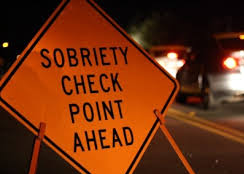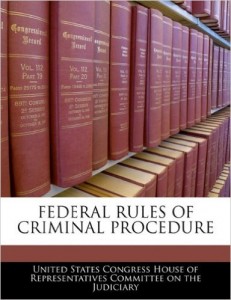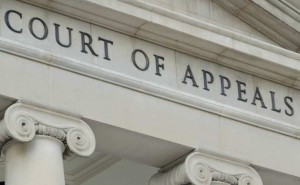People v Kangas
New York Court of Appeals
2016 NY Slip Op 06857
28 N.Y.3d 984, 63 N.E.3d 1133, 41 N.Y.S.3d 189
Decided on October 20, 2016
Issue: Whether information transferred to hard copy from electronic format must comply with Civil Practice Law and Rules (CPLR) section 4539 (b) or the Business Records Rule under section 4518 (a) in order for it to be admissible into evidence.
Appeal of a Felony Conviction in New York
Holding: The New York Court of Appeals held that when information is originally in hard copy and is then transferred to electronic format and then back to hard copy, CPLR 4539 (b) is applicable. However, when information is originally in electronic format and then transferred to hard copy, the Business records rule is applicable under CPLR 4518.
Criminal Appeals Lawyer in New York
 Facts: Police administered a breathalyzer test to the defendant who was charged with driving while intoxicated. At the jury trial, the defendant objected to the admission of the testing simulator record exhibit. The defendant argued that pursuant to CPLR 4539 (b), the record might have been tampered with since there was no authentication of the document remaining untouched between the time the original document was created to the time it was reproduced.
Facts: Police administered a breathalyzer test to the defendant who was charged with driving while intoxicated. At the jury trial, the defendant objected to the admission of the testing simulator record exhibit. The defendant argued that pursuant to CPLR 4539 (b), the record might have been tampered with since there was no authentication of the document remaining untouched between the time the original document was created to the time it was reproduced.
Appealing a Criminal Conviction in New York
The County Court admitted the exhibit despite the defendants objection and held that CPLR 4539 (b) does not apply to documents originally in electronic format but held that CPLR 4518 (a) is the applicable statute to the record of the breathalyzer test since it states that a record, originally in electronic format, is considered admissible as valid evidence to be presented in front of a jury at trial court.
Legal Analysis:?The defendant and the County Court raised two statutes (CPLR 4539 [b] and CPLR 4518 [a]) to argue the issue on the validity of the exhibit of the record of the breath stimulator test.
CPLR 4539 (b) reads as follows:
 “A reproduction created by any process which stores an image of any writing, entry, print or representation and which does not permit additions, deletions, or changes without leaving a record of such addition, deletions, or changes, when authenticated by competent testimony or affidavit which shall include the manner or method by which tempering or degradation of the reproduction is prevented, shall be as admissible in evidence as the original.”
“A reproduction created by any process which stores an image of any writing, entry, print or representation and which does not permit additions, deletions, or changes without leaving a record of such addition, deletions, or changes, when authenticated by competent testimony or affidavit which shall include the manner or method by which tempering or degradation of the reproduction is prevented, shall be as admissible in evidence as the original.”
Although CPLR 4539 (b) states that when a document made in a course of business is reproduced, that document must be authenticated by competent testimony or affidavit (CPLR 4539 [b]), the statute does not pertain to records originally produced electronically. Subdivision (b) of CPLR 4539 was added to accommodate the increase in use of electronic data imaging in 1996 (See Vincent C. Alexander, Practice Commentaries, in CPLR 4539). However, subdivision (b) exclusively refers to the processes of reproducing an original hard copy of the record electronically (i.e. by scanning the original document) and then printing out the copy of the original document, not the process of printing an original electronic record to convert it to hardcopy format. Thus, pursuant to CPLR 4539 (b), authentication is not required because the statute does not apply to the defendants objection since the breathalyzer test exhibit was originally produced electronically and not by paper.
CPLR 4518 (a) The Business Record Rule:
“Generally. Any writing or record, whether in the form of an entry in a book or otherwise, made as a memorandum or record of any act, transaction, occurrence or event, shall be admissible in evidence in proof of that act, transaction, occurrence or event, if the judge finds that it was made in the regular course of any business and that it was the regular course of such business to make it, at the time of the act, transaction, occurrence or event, or within a reasonable time thereafter. An electronic record, as defined in?section three hundred two of the state technology law, used or stored as such a memorandum or record, shall be admissible in a tangible exhibit that is a true and accurate representation of such electronic record. The court may consider the method or manner by which the electronic record was stored, maintained or retrieved in determining whether the exhibit is a true and accurate representation of such electronic record. All other circumstances of the making of the memorandum or record, including lack of personal knowledge by the maker, may be proved to affect its weight, but they shall not affect its admissibility. The term business includes a business, profession, occupation and calling of every kind.”
 The County Court held that to determine admissibility, in this case, the document must comply with CPLR 4518 (a) because its language regarding electronic records is clear and relevant to the issue at bar. Pursuant to CPLR 4518 (a), the hard copy format of a record that was originally produced electronically in the course of business shall be admissible in a tangible exhibit that is a true and accurate representation (CPLR 4518 [a]). In addition, the County Court relied on the state agencys certification as authentication for the breathalyzer test record. Therefore, independent authentication was not necessary to validate the breathalyzer test record exhibit because there was no reproduction involved; the printout version of the electronic record served as an original hard copy of the document.
The County Court held that to determine admissibility, in this case, the document must comply with CPLR 4518 (a) because its language regarding electronic records is clear and relevant to the issue at bar. Pursuant to CPLR 4518 (a), the hard copy format of a record that was originally produced electronically in the course of business shall be admissible in a tangible exhibit that is a true and accurate representation (CPLR 4518 [a]). In addition, the County Court relied on the state agencys certification as authentication for the breathalyzer test record. Therefore, independent authentication was not necessary to validate the breathalyzer test record exhibit because there was no reproduction involved; the printout version of the electronic record served as an original hard copy of the document.
